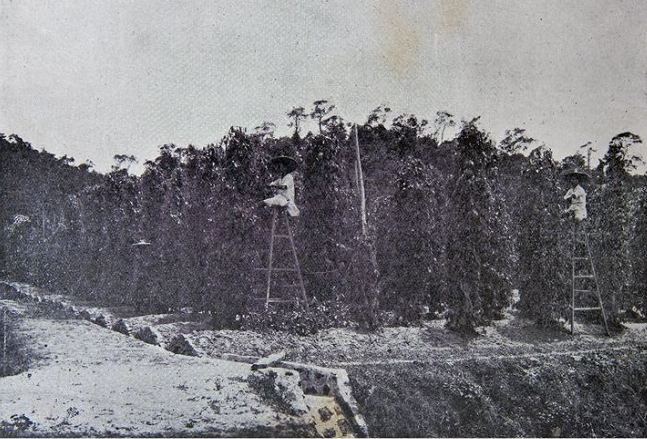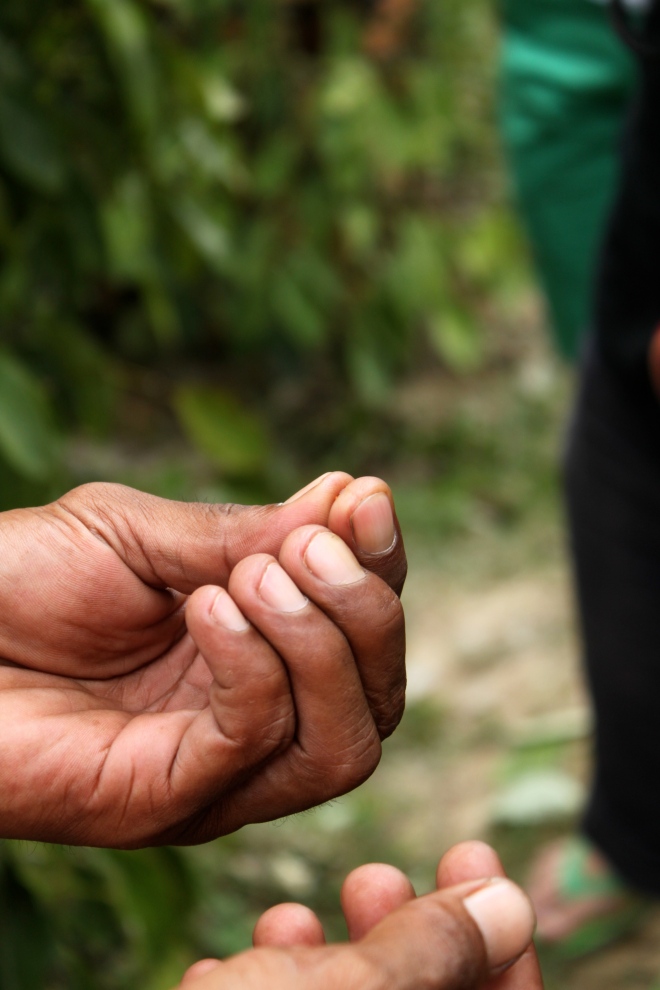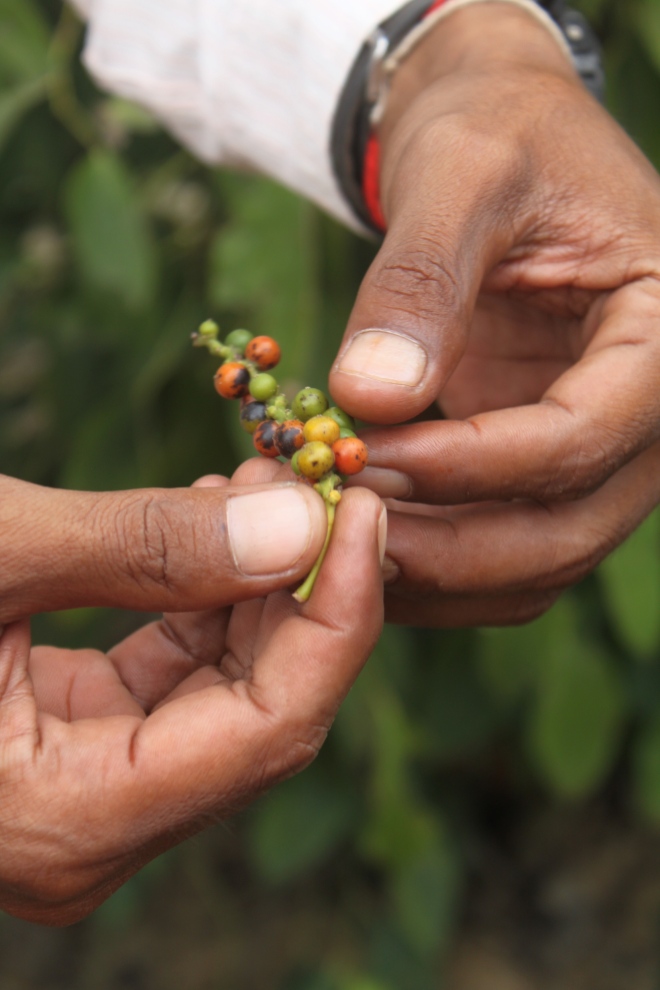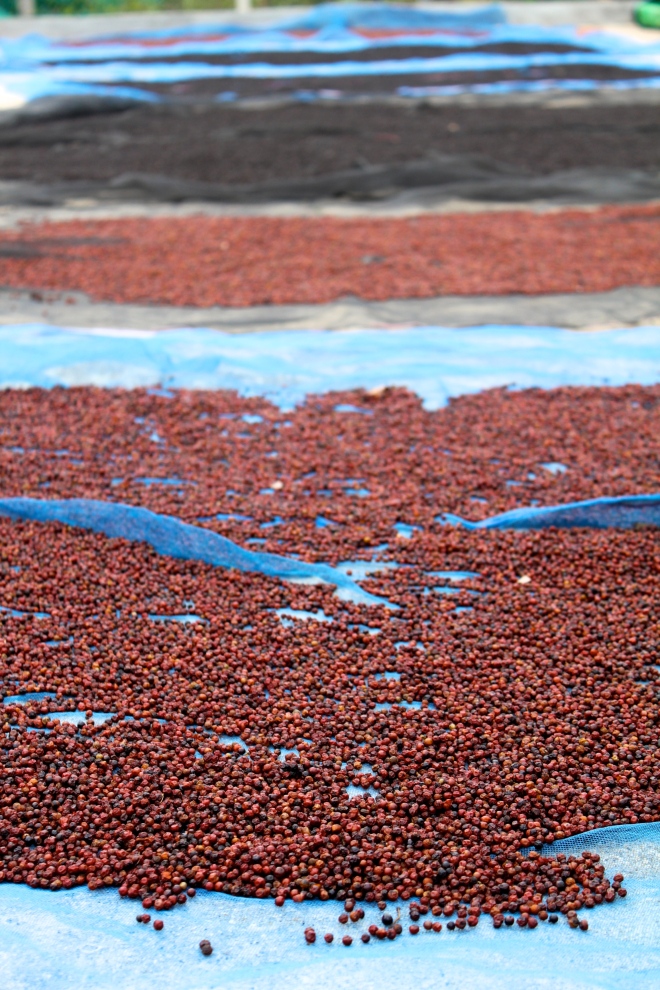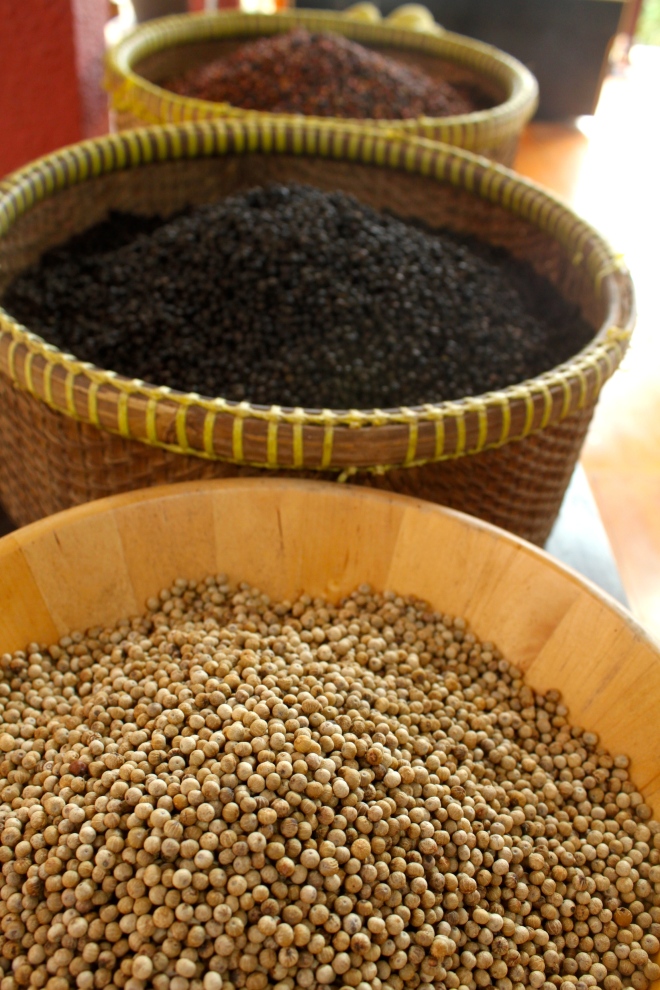The story of Kampot pepper begins 800 years ago. At least according to written records: Chinese explorer Tchéou Ta Kouan traveled Cambodia in the 13th century and famously referenced the crop that came to define a whole region. Apparently, it is likely that some of his countrymen brought the crop along when they immigrated from the Hainan province of China. They would plant the crop at the outskirts of the jungle, using vines as support structures for the plants to grow on. 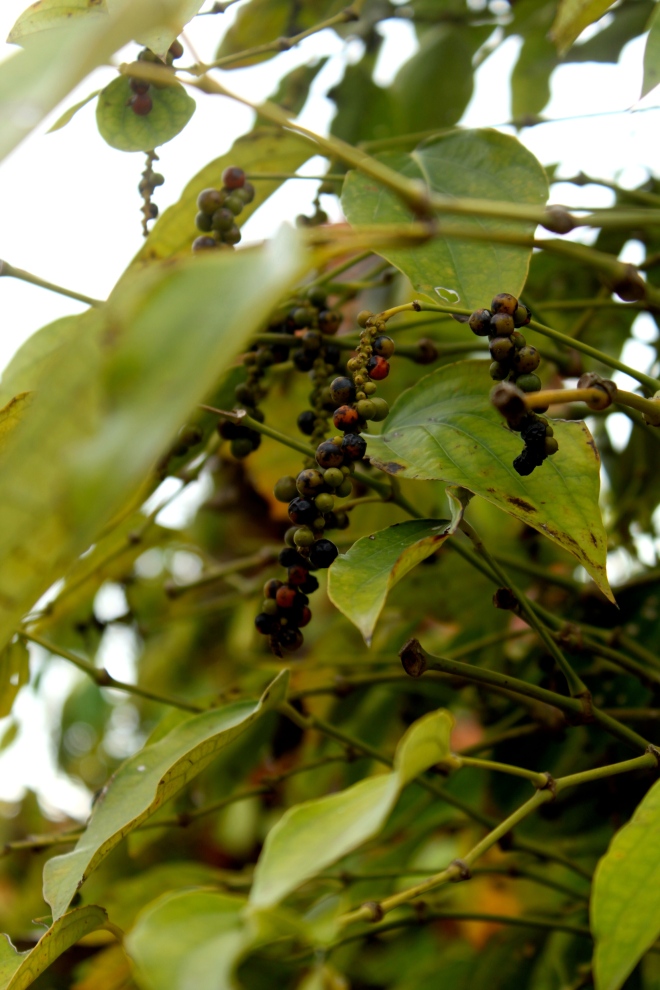 When the Indonesian province of Aceh was attacked by the Dutch and erupted into war in 1873, the Indonesian sultan wanted nothing less than leave the priceless plantations in the hands of his enemies. So he burned them to the ground, leaving the Cambodian competitors to take over the market.
When the Indonesian province of Aceh was attacked by the Dutch and erupted into war in 1873, the Indonesian sultan wanted nothing less than leave the priceless plantations in the hands of his enemies. So he burned them to the ground, leaving the Cambodian competitors to take over the market.
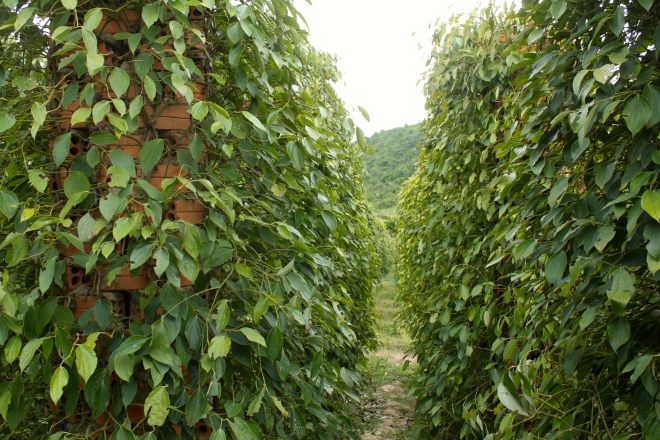 However, even Kampot pepper fell victim to colonial profiteering. Under the French protectorate rule in the 19th century, pepper production in the province skyrocketed as colonial masters took over the land and its wealth. At its peak production, the country exported around 8’000 tons of pepper to Europe. Parisian restaurants with a reputation would only ever use Kampot pepper in their dishes.
However, even Kampot pepper fell victim to colonial profiteering. Under the French protectorate rule in the 19th century, pepper production in the province skyrocketed as colonial masters took over the land and its wealth. At its peak production, the country exported around 8’000 tons of pepper to Europe. Parisian restaurants with a reputation would only ever use Kampot pepper in their dishes.
Yet, pepper production was still buffeted by the wind of international politics. The French protectorate of Cambodia was in fierce competition with the French colony of Cochin China, and sporadic import bans or high export tariffs were put into place to Kampot products in order to favor the colonies. By the 1960s, exports dropped to around 3’000 tons of pepper, which now competed on the basis of its superior taste.
The greatest crisis hit when the Khmer Rouge rose to power. Something as extravagant as spice production had no space in their utopia of an agrarian, equal society. What the country should produce was rice – and nothing but rice. So virtually all of the pepper plantations were destroyed to make room for the staple crop, and almost all of the knowledge surrounding the high-quality production was lost with them.
Contrary to common belief, the Cambodian period of turmoil was not over with the fall of the Khmer Rouge in 1979. Rather, the invasion by the Vietnamese sparked yet another civil war when the fighters fled to border regions and made repeated attacks into the “freed” areas. Only in the 1990s did UN-led peace negotiations lead to something resembling normalcy, and some of the oldest families returned to their land to restart the pepper business. They were encouraged by the fact that pepper prices at that time were promisingly high.
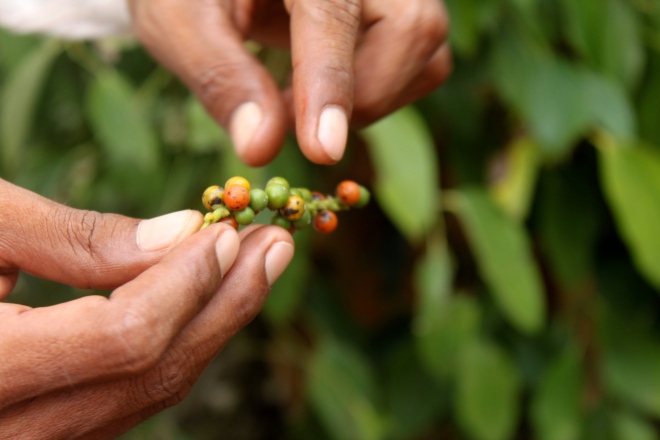
After 4 years, once the first real harvest arrived in the markets, Kampot’s pepper farmers had to recognize that too many of their neighbors had the same idea: overwhelmed by the instant spike in supply, prices plummeted and the new business owners had to deal with losses instead of the profits they were hoping for. Many, discouraged, left the farms yet again to seek their fortunes elsewhere.
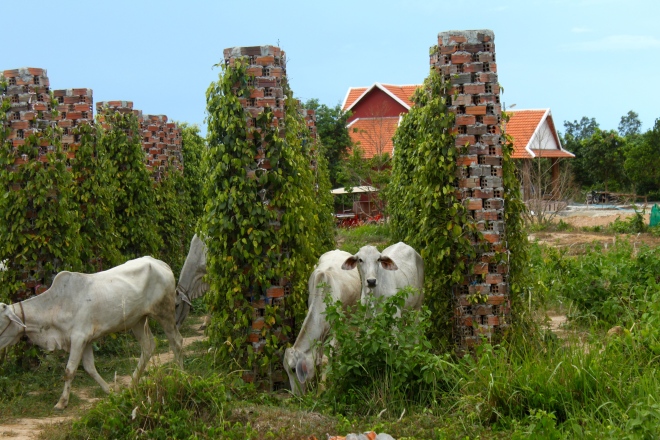
Only after decades of painstaking recovery has Kampot pepper production succeeded in a revival of sorts, spurred along by enthusiastic foodies like my friends and I that go on pepper tours to witness and understand such a unique product. Kampot pepper also has the to-date only Geographical Indication label in Cambodia, a recognition of its inimitable practices that lead to the exquisite taste.
To ensure best quality, much of the processes in Cambodia are still done by hand: picking, drying and sorting the pepper corns, making sure no debris enters the lots, etc. The geographical indication is useful to prevent competitors from making false claims, but it requires a lot of bureaucratic organization: each “real” Kampot pepper package will have on its label an indication of where and when it was produced, thus allowing for full traceability.
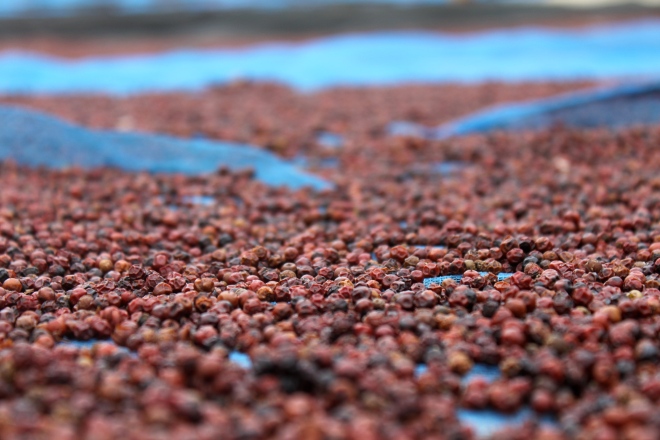
Fun facts about pepper:
- All four colors come from the same grain. Green pepper is harvested unripe, red is harvested just ripe, black is dried on the stalk, and white pepper comes from rubbing off the outmost layer of the red pepper corn.
- Harking back to the times when pepper corns were luxury goods, the Dutch term for “crazy expensive” is “peperduur” (“pepper expensive”).
- Today, Vietnam is the largest pepper producer, providing over 30% of global consumption.
- When the Arabs dominated the spice trade, they would make up stories about dragons or venomous snakes guarding pepper plantations to keep competitors away.
- In per value terms, pepper tends to be the most-traded spice overall.
